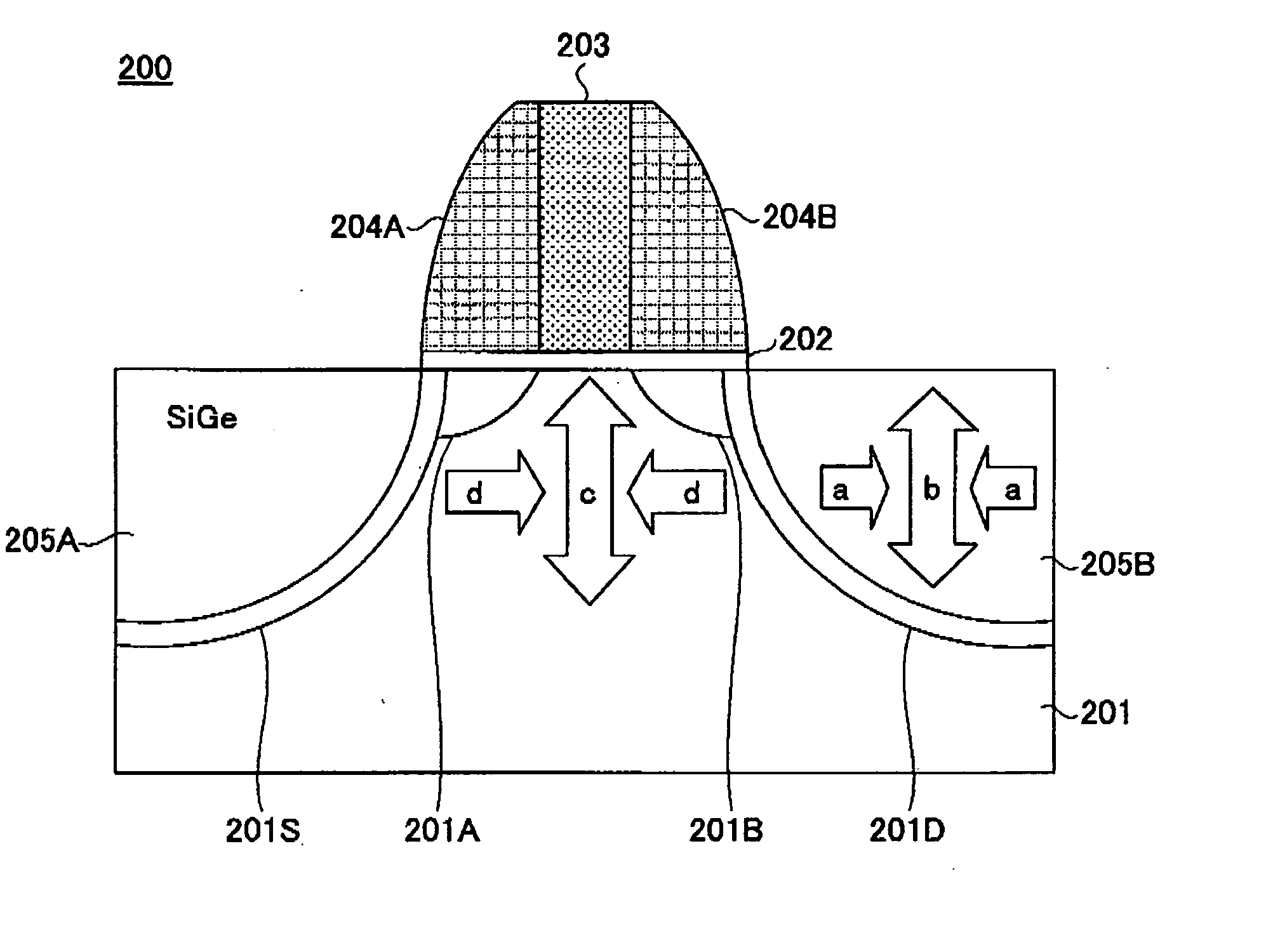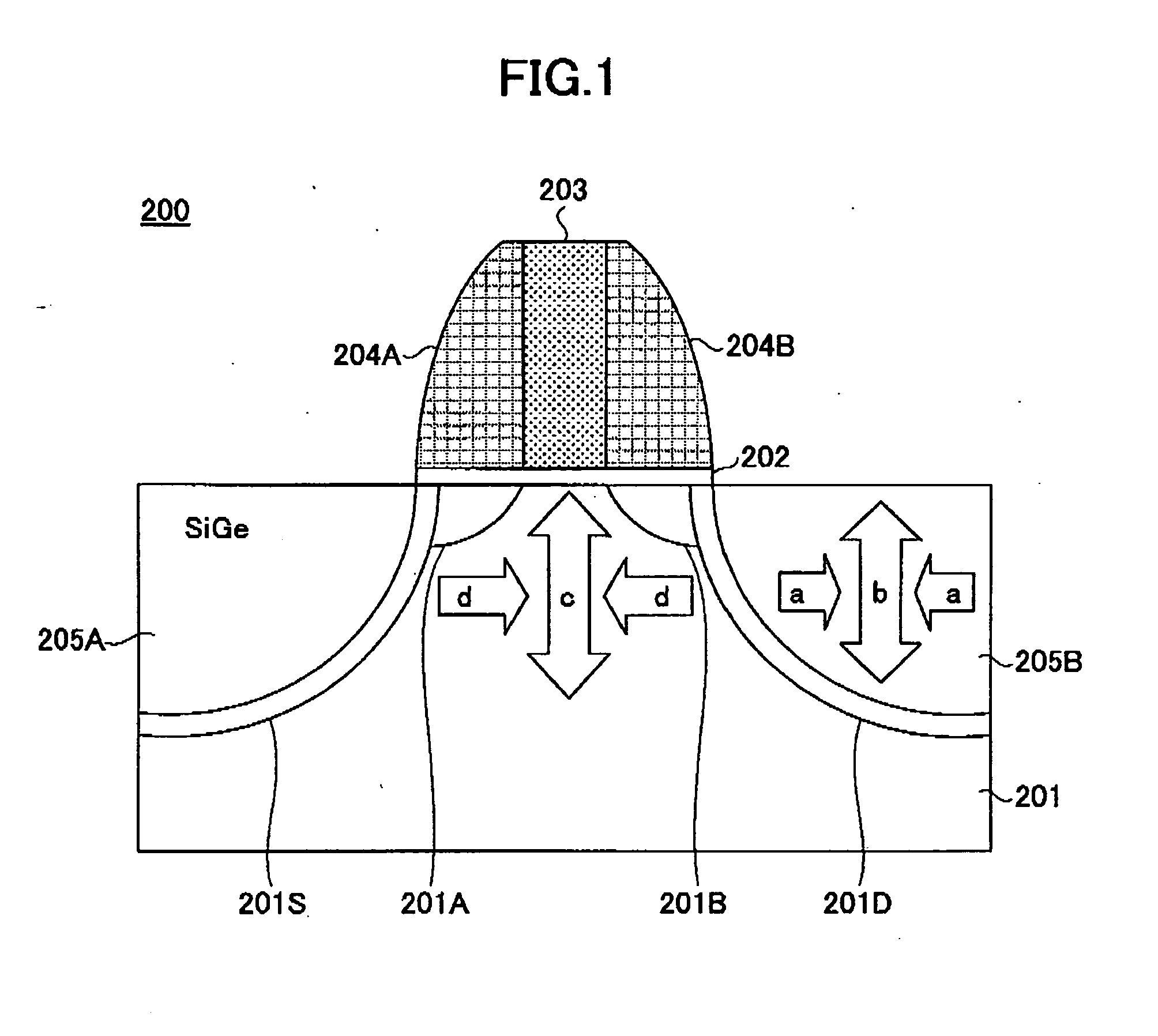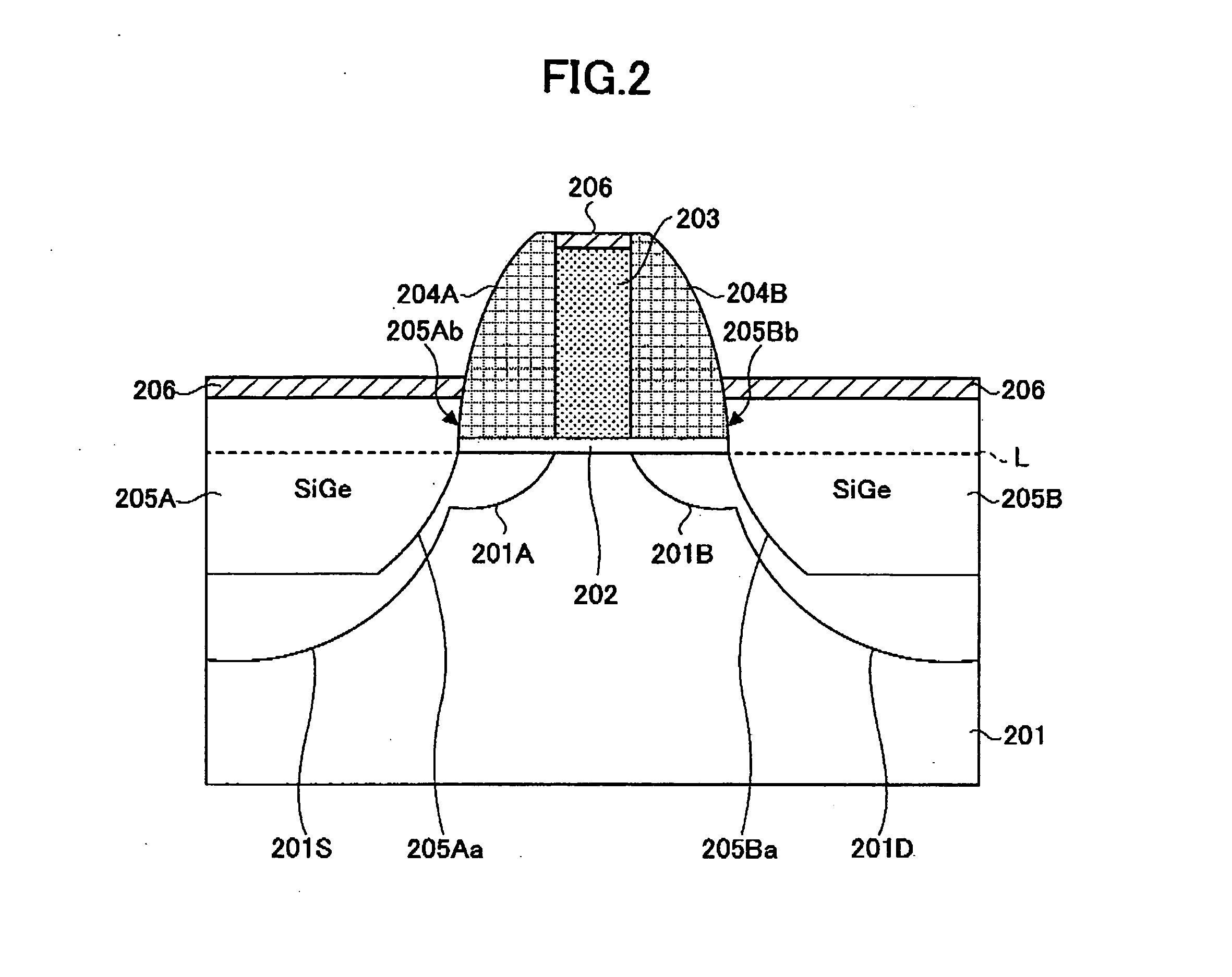Semiconductor device and production method thereof
a technology of semiconductor and production method, applied in the field of semiconductor devices, can solve the problems of increasing the speed of lsi, the inability to increase the speed of the cmos inverter circuit, and the inability to increase the speed of the lsi, so as to prevent the silicide layer
- Summary
- Abstract
- Description
- Claims
- Application Information
AI Technical Summary
Benefits of technology
Problems solved by technology
Method used
Image
Examples
first embodiment
[0078]FIG. 3 is a cross-sectional view illustrating an example of a semiconductor device according to a first embodiment of the present invention.
[0079] The semiconductor device 10 shown in FIG. 3 is a p-channel MOS transistor, in which a device region 11A demarcated by an element separation region 12 is formed on a single crystal silicon substrate 11 having a (100) crystal plane as a principal plane. Corresponding to the device region 11A, which is an n-type semiconductor region, an n-type Si well 11n is formed in the silicon substrate 11.
[0080] On the silicon substrate 11 including the n-type device region 11A, a gate insulating film 13 is formed on the silicon substrate corresponding to a channel region in the silicon substrate. For example, the gate insulating film 13 may be formed from a thermal oxide film, a silicon nitride film, a silicon oxide nitride film, or others. In this example, it is assumed that the gate insulating film 13 is formed from a silicon oxide nitride fil...
second embodiment
[0132]FIG. 6 is a cross-sectional view illustrating an example of a semiconductor device 30 according to a second embodiment of the present invention.
[0133] In the following descriptions, the same reference numbers are assigned to the same elements as those described in the previous embodiment, and overlapping descriptions are omitted.
[0134] The semiconductor device 30 shown in FIG. 6 is a p-channel MOS transistor. The p-channel MOS transistor 30 is basically the same as the p-channel MOS transistor 10 of the first embodiment except that side surfaces 19d of the trenches 111A and 111B in the silicon substrate 11 are formed from facets along a Si (111) plane.
[0135] In the p-channel MOS transistor 30, each of the trenches 111A and 111B in the silicon substrate 11 includes the bottom surface 19c which is nearly parallel to the principal plane of the silicon substrate 11, and the side surface 19d which is formed from the facet along the Si (111) plane at an angle of 56° relative to t...
third embodiment
[0148]FIG. 8 is a cross-sectional view illustrating an example of a semiconductor device 40 according to a third embodiment of the present invention.
[0149] In the following descriptions, the same reference numbers are assigned to the same elements as those described in the previous embodiments, and overlapping descriptions are omitted.
[0150] The semiconductor device 40 shown in FIG. 8 is a p-channel MOS transistor. The p-channel MOS transistor 40 is basically the same as the p-channel MOS transistor 10 of the first embodiment except that a side surface 19d and a side surface 19f of the trenches 111A and 111B in the silicon substrate 11 are formed from facets along Si (111) planes of different orientation.
[0151] In the p-channel MOS transistor 40, each of the trenches 111A and 111B in the silicon substrate 11 includes the bottom surface 19c nearly parallel to the principal plane of the silicon substrate 11, the side surface 19d which is formed from the facet in the Si (111) plane ...
PUM
 Login to View More
Login to View More Abstract
Description
Claims
Application Information
 Login to View More
Login to View More - R&D
- Intellectual Property
- Life Sciences
- Materials
- Tech Scout
- Unparalleled Data Quality
- Higher Quality Content
- 60% Fewer Hallucinations
Browse by: Latest US Patents, China's latest patents, Technical Efficacy Thesaurus, Application Domain, Technology Topic, Popular Technical Reports.
© 2025 PatSnap. All rights reserved.Legal|Privacy policy|Modern Slavery Act Transparency Statement|Sitemap|About US| Contact US: help@patsnap.com



